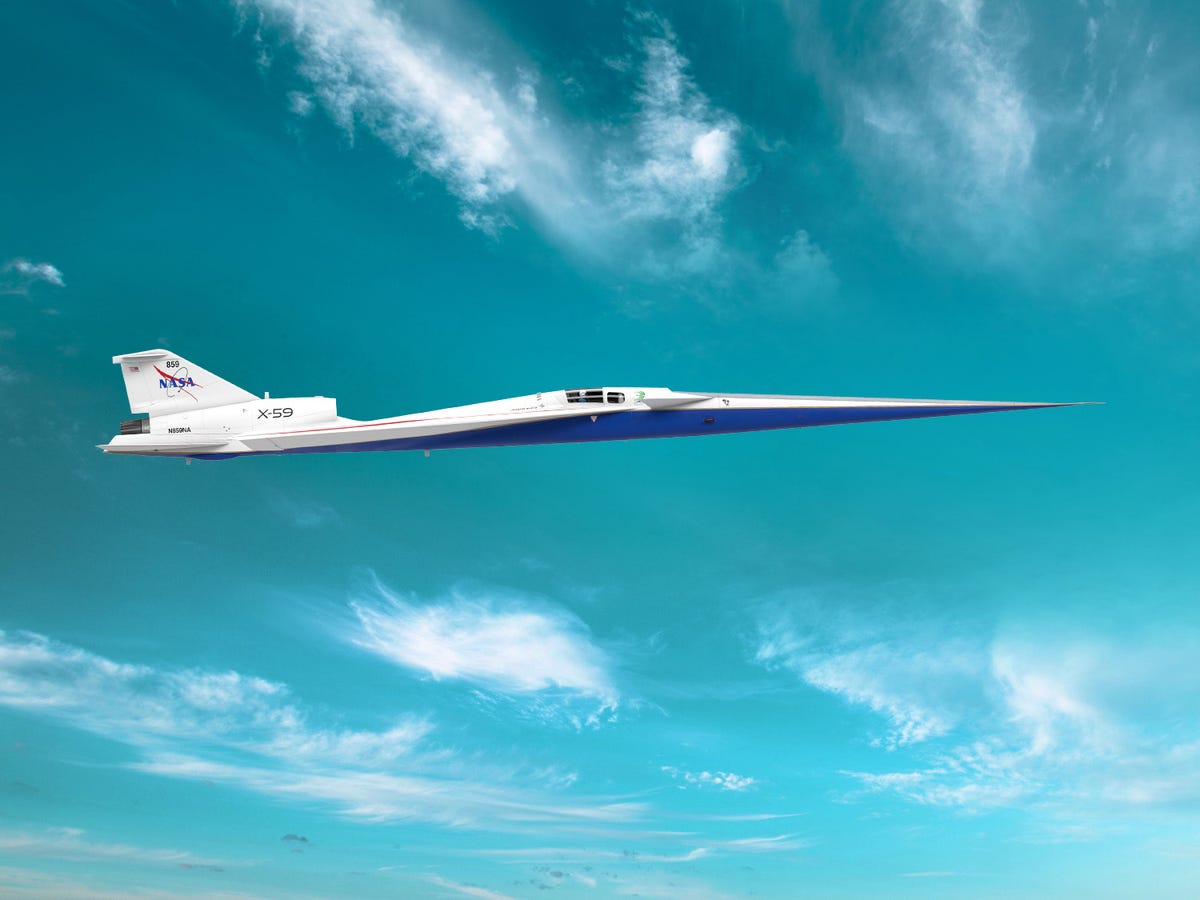NASA plans to break the sound barrier again in its Quesst mission

NASA's X-59, the jet being used in the Quesst mission.
Have you ever watched a superhero movie where the protagonist had the gift of super speed and could travel at the speed of sound? Because of NASA, flying at the speed of sound, about a mile in 4.69 seconds, is not limited to fiction and might be in your future.
In 1947, NASA's predecessor, the National Advisory Committee for Aeronautics (NACA), flew the Bell X-1 rocket plane at a rate faster than the speed of sound. Now, 75 years since the historic flight, NASA plans to do it again.
The X-1 rocket's flight was heard over the Mojave Desert in California when a sonic boom thundered across the high desert. This sonic boom was caused when the X-1 rocket broke the sound barrier, an imaginary wall in the sky that was thought impossible to penetrate.
Bell X-1 rocket jet plane
In the Quesst mission, NASA team members are working to break the sound barrier again, but in a much more efficient way that could make it possible for all of us to one day travel as fast as the X-1 pilots did.
"That first supersonic flight was such a tremendous achievement, and now you look at how far we've come since then," said Catherine Bahm, an aeronautical engineer at NASA's Armstrong Flight Research Center. "What we're doing now is the culmination of so much of their work."
The goals of the Quesst mission are to design and build an aircraft with technology that reduces the loudness of a sonic boom to a gentle thump to people on the ground, and to fly the aircraft over select US communities to analyze and monitor human responses to the sound generated during the supersonic flight, according to NASA.
Despite having flown the X-1 rocket plane past Mach 1, a measurement of how fast you're flying relative to the speed of sound, 75 years ago, current airliners have not been able to go beyond that threshold again.
"We've kind of been stuck with our airliners at about Mach .8 for the past almost 50 years, so being able to get there – wherever there is – much faster is still kind of an unfulfilled dream," said Peter Coen, NASA's mission integration manager for Quesst.
If the Quesst mission is successful, NASA says it could open up a new era in air travel, one in which "airline passengers might hop on a supersonic jet at breakfast time in Los Angeles to make a lunchtime reservation in New York City".
The aircraft being used for the mission is the X-59, which has quiet supersonic technology. NASA and its partners began building the X-59 in 2018, and it's still not ready for flight. However, the first flights are expected to occur soon, targeted for early 2023.
The biggest obstacle to supersonic flights is limiting the speed to mitigate the negative effects of sonic boom noise. However, with the X-59, Coen says he thinks NASA is ready to break the sound barrier once again.
Innovation
- What is Artemis? Everything you need to know about NASA's new moon mission
- The 4 best drones: Which flying camera is right for you?
- Elon Musk says that the self-driving Tesla could be ready by the end of 2022
- The 5 best electric car (plus, the cheapest EV available)
- Google opens up its experimental AI chatbot for public testing
